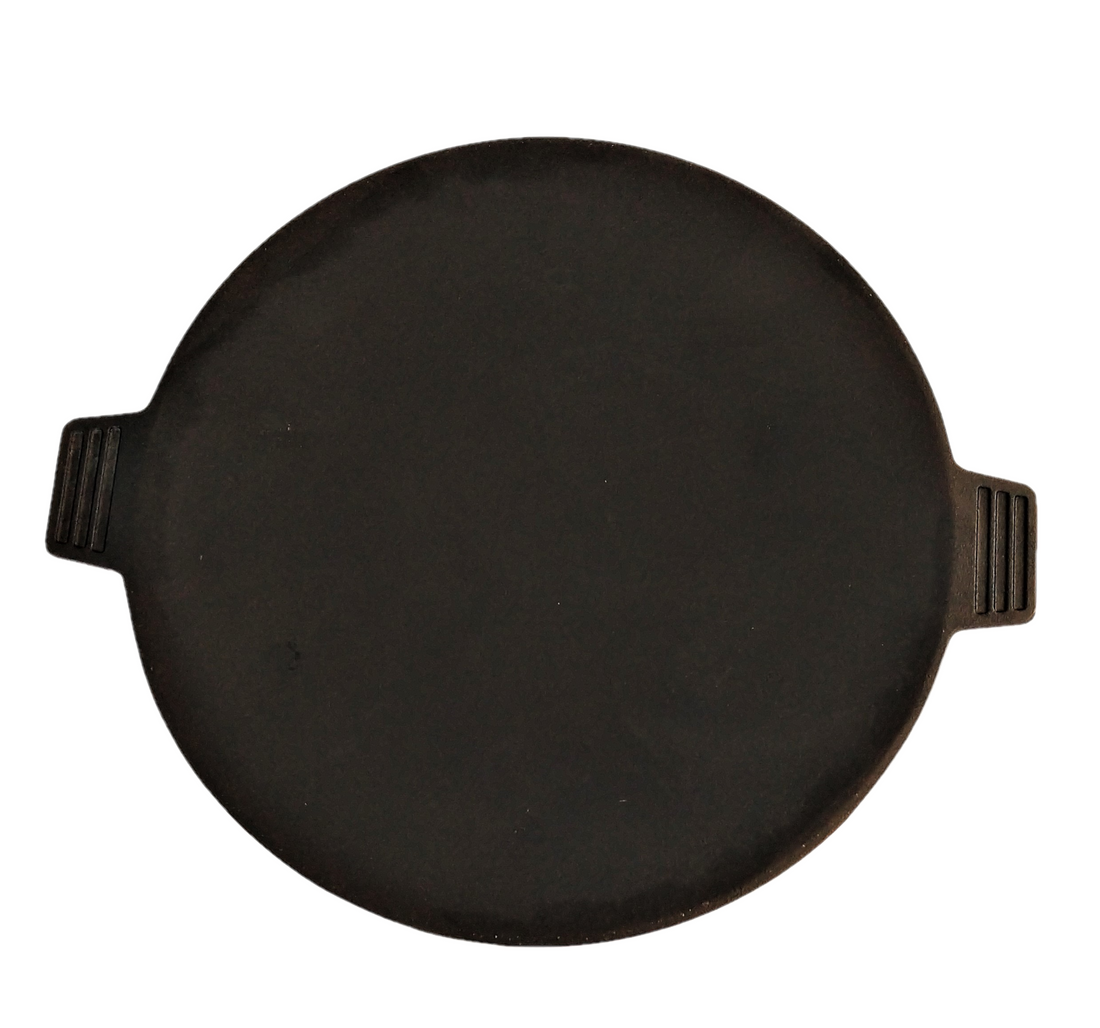As we all know cast iron has been the preferred way to cook since the early 1800s. The sturdy design and near indestructible cast iron construction of these fine cooking instruments make them a great for camping and outdoor use. No need to worry about breaking or scratching them.
Why use cast iron?
Cast Iron will heat more slowly than steel or aluminum, but once heated it will hold its heat longer than any other cookware. This makes it perfect for use outdoors. The heat will stay in the skottle or pan when it is windy or uncovered. The dense metal helps food cook evenly and brown beautifully.
Season it for non-stick greatness.
Seasoning cast iron cookware is the process of coating the surface with fat or oil to produce a non-stick surface. Seasoning also helps to prevent rust. The skottle has been pre-seasoned for your convenience using corn oil and is ready to use. We do recommend rinsing with warm soapy water and hand dry before you start cooking. Also, use a little extra oil in the pan the first few times you cook to reinforce the seasoning.
Occasionally, it may be necessary to re-season your cast iron. Follow these instructions to season:
• Clean the entire unit completely. Usually, warm soapy water will accomplish this task. However, it will not damage cast iron to use a scouring pad or stiff brush to remove any previous seasoning or surface rust.
• Apply a light coat of oil/fat on the entire cooking surface. Many people like to use flaxseed oil, vegetable oil, shortening, or even bacon grease – the oil/fat needs to be food grade.
• Heat the unit slowly to about 350°F (176°C). The heated oil/fat will fill in the pores and crevices of the cast iron to make a waterproof, non-stick surface that is ideal for cooking.
• Eventually, a good non-stick, glossy black surface will begin to form. The best surface is attained over time by using your cast iron cookware frequently which creates multiple layers of seasoning
How to take care of it and clean it.
• Try not to use metal spatulas or spoons with cast iron cookware, as they can scratch down into the layers of seasoning.
• After each use, clean off all remaining food. This can be accomplished in several ways:
1. Wipe out the food with a paper towel.
2. Rinse in hot water and clean with a dish-rag or soft sponge.
3. Allow the piece to soak with hot water for a few minutes to allow particularly sticky food to release before lightly scrubbing with a rag.
4. Rub coarse salt along the surface to remove unwanted particles.
5. Use a few drops of normal dish soap to clean your cast iron.*
*NOTE: A long-standing “rule of thumb” for cleaning cast iron has been that soap should NEVER be used. However, the suspected origin of this idea comes from a time when soap had high lye content, which damaged the seasoning. Dish soaps today do not contain lye. If only used occasionally, mild dish soap should have little effect on cast iron seasoning.
• Always dry cast iron cookware thoroughly. An easy method is to put the cast iron cookware back in a warm oven after it has been turned off.
• Always store cast iron in a dry environment.
• After cleaning cast iron cookware, it is best to apply a light layer of cooking oil using a lint-free paper towel or rag. This will better maintain the seasoning.
• Do not use abrasives such as steel wool, steel coils, metal brushes, etc. on your cast iron for cleaning purposes. These tools can be useful to polish the cooking surface or restore an old piece of cast iron but can remove the
seasoning.

